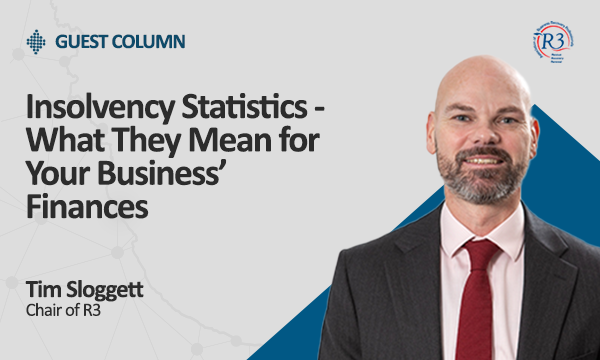The Greatest Guide To Insolvency Practitioner
The Greatest Guide To Insolvency Practitioner
Blog Article
The 7-Second Trick For Insolvency Practitioner
Table of Contents6 Simple Techniques For Insolvency PractitionerInsolvency Practitioner Fundamentals ExplainedThe Basic Principles Of Insolvency Practitioner The smart Trick of Insolvency Practitioner That Nobody is DiscussingA Biased View of Insolvency PractitionerA Biased View of Insolvency PractitionerThe 45-Second Trick For Insolvency Practitioner
Insolvency is when responsibilities are above the value of the business, or when a borrower can not pay the financial debts they owe. A company can end up being bankrupt as a result of a number of scenarios that lead to poor cash money flow. When confronted with insolvency, a service or person can get in touch with financial institutions straight and restructure financial obligations to pay them off.
Bankruptcy can bring about bankruptcy procedures, in which legal action will certainly be taken against the bankrupt person or entity, and properties. Insolvency Practitioner may be sold off to repay impressive financial obligations. Local business owner may call creditors directly and restructure financial obligations right into more convenient installments. Financial institutions are typically responsive to this technique due to the fact that they intend to be paid off and stay clear of losses, even if the repayment is on a postponed timetable.
The owner creates a proposal outlining how the debt might be restructured using price decreases or other prepare for assistance. The proposal shows financial institutions exactly how business may produce enough capital for successful procedures while paying its financial obligations. Commonly, a forgiven financial obligation might be considered income by the Internal Earnings Solution (IRS).
Insolvency Practitioner Things To Know Before You Buy
When a business has to pay raised prices for items and solutions, the company passes along the cost to the consumer. Instead than pay the increased cost, numerous customers take their organization somewhere else so they can pay much less for an item or service. Losing clients causes losing earnings for paying the company's financial institutions.
When operations discontinue, so does the business's income. Some business end up being insolvent because their items or services don't evolve to fit consumers' changing needs.
The Basic Principles Of Insolvency Practitioner
Costs exceed profits and bills stay overdue. Kinds of bankruptcy include cash-flow insolvency and balance-sheet bankruptcy. Cash-flow insolvency takes place when a firm has the properties to cover their debts but they remain in the wrong form, such as property instead of liquid funds. Balance-sheet insolvency, on the other hand, shows a lack of possessions in any kind of form to cover financial obligations.
The internal revenue service states that an individual is bankrupt when the overall responsibilities surpass total possessions. Insolvency Practitioner. A insolvency, on the other hand, is a real court order that illustrates how an insolvent person or business will certainly pay off their lenders, or how they will certainly market their possessions in order to make the settlements
Some Known Facts About Insolvency Practitioner.
If that situation prolongs longer than anticipated, it can cause bankruptcy. When a company or person is bankrupt, they can not meet their financial commitments. Solvency is when you have adequate funds to cover the payments you owe. A company is taken into consideration solvent when they have extra assets than responsibilities.

Understanding the factors that can result in bankruptcy, such as overspending, can help you avoid bankruptcy and its repercussions.
The 5-Minute Rule for Insolvency Practitioner
It is well understood that supervisors and policemans of companies (and managers of minimal responsibility companies) owe fiduciary responsibilities to their organizations and their investors (or participants). These fiduciary obligations are specified by state laws and, though there are variants from state to state, they commonly include a duty of commitment and a responsibility of care.
The responsibility of treatment requires directors and police officers to work out persistance, to make enlightened choices, and to act in excellent confidence so that their actions are in the finest rate of interest of the company. Though past the extent of this conversation, some states permit these responsibilities to be restricted either by so keeping in mind in the business documents or following various other demands.
The smart Trick of Insolvency Practitioner That Nobody is Discussing

Beware regarding giving shareholders favoritism at the cost of financial institutions (e.g., licensing and moneying a dividend or a stock redemption). Take care regarding favoritism between classes of investors. Make practical efforts to find out all the realities prior to taking a details strategy; supervisors must genuinely believe that any kind of choices made remain in the very best rate of interests of the firm in its whole (i.e., decisions will be examined in hindsight in light of the impact of such activities on the company).
In any type of insolvency or bankruptcy proceeding, repayments made to certain financial institutions at the cost of various other creditors can be clawed back, especially if there is some connection between the business and the creditor. Think about recommending at a yearly shareholder conference (or any various other conference of investors) a resolution affirming that all prior business decisions and actions taken by you could look here the directors and police officers of the corporation were absorbed good faith after an read more exercise of affordable treatment.
Insolvency Practitioner - Questions
Fully divulge any type of individual or business relationships with celebrations beyond of purchases entailing the company read this post here to avoid the look of a dispute of passion. In reviewing prospective fund elevating deals or a sale of properties of the struggling firm, know that these transactions may be inspected later on due to any type of succeeding development of supervisors' fiduciary duties to consist of financial institutions.
Report this page